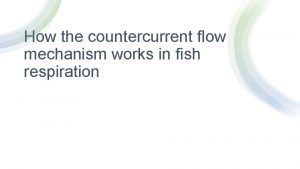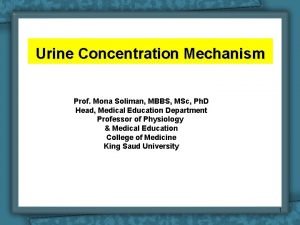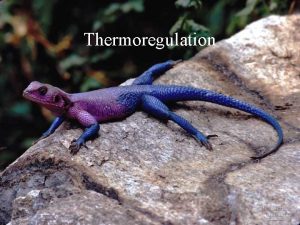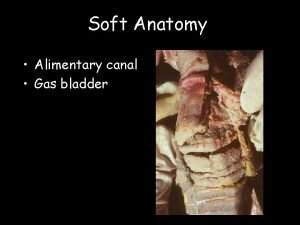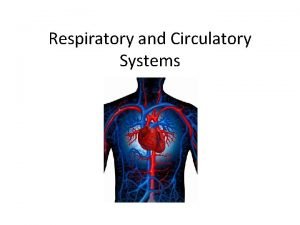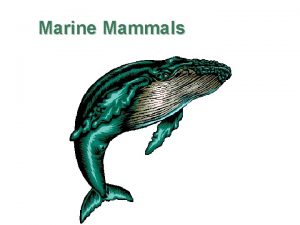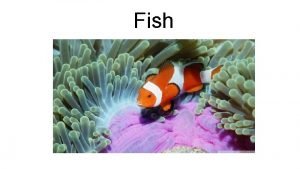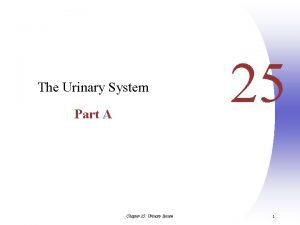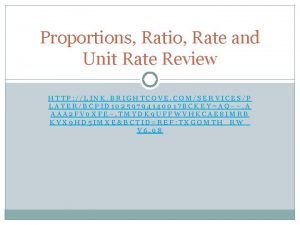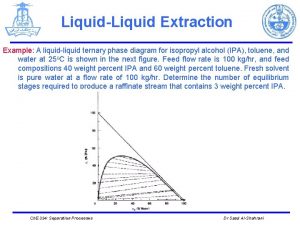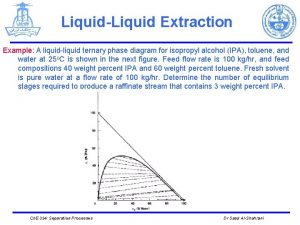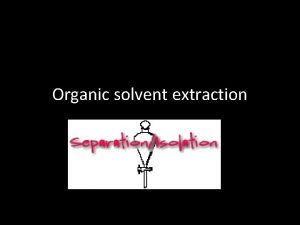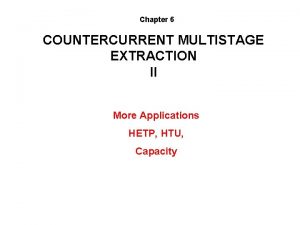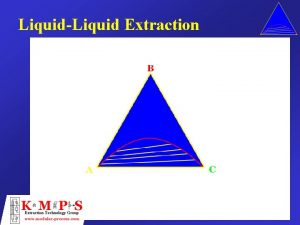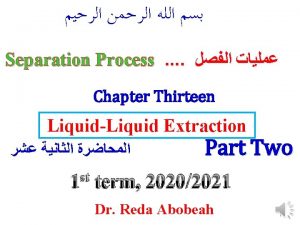For countercurrent liquidliquid extraction the flow rate difference














- Slides: 14

For counter-current liquid-liquid extraction, the flow rate difference of passing streams (such as E 1 and R 2) remains constant throughout the entire cascade. E 1 extract 1 R 1 E 2 2 R 2 raffinate A. true B. false C. depends on the maximum solubility of the contaminant

Using a graphical method for counter-current cascades in a partially miscible system, streams exiting the same stage (such as E 1 and R 1) are connected by _____. E 1 extract 1 R 1 A. the difference point B. equilibrium curve C. neither of these E 2 2 R 2 raffinate

Given a constant liquid-liquid extraction partition coefficient, the flow rates of solute (B) and liquid carrier (A), how can one decrease the concentration of B in the raffinate stream? Assume equilibrium is reached at each stage. A. increase the tank size B. decrease the amount of solvent C. increase the amount of solvent D. recycle ½ of the raffinate to the feed

A liquid-liquid extraction of a solute (B) in a feed carrier (A) is performed using a solvent (S). Which of the following, when doubled, will have the greatest impact on increasing the fraction of B extracted? A. flow rate of A B. flow rate of S C. reciprocal of the partition coefficient D. mass ratio of B to the feed (A)

Which of the following material balances is true for a co-current liquid-liquid extraction with stage equilibrium? R 1 E 0 R 2 Stage 1 A. R 1 = R 2 B. R 1 + R 2 = E 0 + E 1 C. E 0 + R 1 = E 1 + R 2 D. E 0 + R 2 = E 1 + R 1 E 1 RN Stage 2 EN-1 RN+1 Stage N EN

Vitamin E is isolated from a vegetable oil using hexane in liquid-liquid extraction. How may degrees of freedom does this system have? The mixed feed contains oil, hexane and vitamin E. Extract A. 0 B. 1 Mixed feed C. 2 X wt. % oil Y wt. % C 6 Z wt. % Vit. E D. 3 E. 4 Settling Tank Temp = 25°C Raffinate

Which of the following will reduce the fraction of solute in the extract stream for a multiple-stage, liquid-liquid extraction? Assume the partition coefficient is > 1, all else is held constant, and two phases are created. A. increase the fraction of solute in the feed B. decrease the amount of solute in the raffinate C. decrease the solvent to feed ratio D. decrease the purity of the solvent (with more solute) E. none of the above

What species is the solute? ethylene glycol A. ethylene glycol B. water C. furfural D. cannot tell furfural water

Which system will have a mixture separate into an extract and raffinate phase with equal compositions? (T – solute, H – carrier, S – solvent) T T A B H S C H Both A & B S

Which system has a greater partition coefficient for the solute (T) in the solvent (S)? Note: H is the carrier fluid. T A T B T H S C H S D Cannot tell from plots S H

What is the maximum amount of the solute T in the feed that can enter an extraction unit if using pure solvent? H is the carrier and S is the extracting solvent. T 100 0 20 80 A. 100% 40 60 B. 85% 60 40 C. 65% D. 40% 80 20 0 H 100 80 60 40 20 0 S

Which axis represents the solute (S)? High S C A Low S B

Which stream has the highest flow rate? 100 90 A. solvent B. feed C. extract Wt. % of DIPE 80 70 60 50 extract 40 30 20 10 0 0 10 D. raffinate E. more than one are highest 20 30 40 Wt. % of Isopropyl Alcohol 50 60

For a dilute system, for which separation processes can we not assume constant flow rates? A. immiscible liquid-liquid extraction B. stripping C. partially miscible liquid-liquid extraction D. absorption E. washing
 Countercurrent flow in fish
Countercurrent flow in fish Countercurrent exchange
Countercurrent exchange Homeostasis mechanisms for regulation of body temperature
Homeostasis mechanisms for regulation of body temperature Countercurrent exchange in fish
Countercurrent exchange in fish Countercurrent exchange
Countercurrent exchange Countercurrent exchange
Countercurrent exchange Circulation in amphibians
Circulation in amphibians Countercurrent exchange
Countercurrent exchange Which sharks lay eggs
Which sharks lay eggs Abnormal and normal constituents of urine
Abnormal and normal constituents of urine What is the difference between rate and unit rate
What is the difference between rate and unit rate Rotational irrotational flow
Rotational irrotational flow Fraction
Fraction Fspos
Fspos Typiska drag för en novell
Typiska drag för en novell
